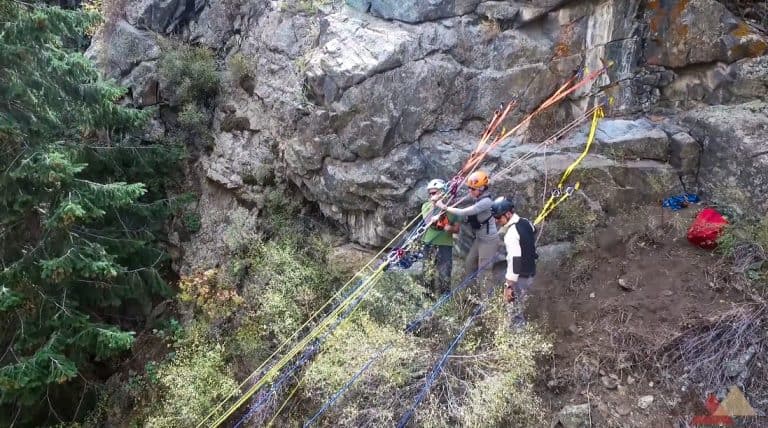In situations where natural anchors aren’t available or reliable, artificial anchors are essential. Artificial anchors like bolts and anchor plates provide consistent stability and security, especially in environments that lack sturdy trees or rocks. In this second part of our series, we’ll explore the setup, applications, and safety considerations for artificial anchors in rescue operations.
Why Use Artificial Anchors?
Artificial anchors offer controlled, predictable reliability, making them invaluable in areas where natural anchors may not meet safety requirements. They are especially useful in industrial settings, indoor climbing gyms, urban rescues, and other controlled environments. When installed correctly, artificial anchors provide stable, long-lasting attachment points that ensure the safety of both rescuers and those they’re assisting.
Types of Artificial Anchors
- Bolts
- Application: Bolts are commonly used in climbing and rescue operations where secure, permanent anchors are needed. They’re drilled and fixed into rock, concrete, or metal structures, providing a reliable anchor point.
- Installation Considerations: When installing bolts, it’s essential to select the correct type and size based on the load requirements. Stainless steel or high-tensile bolts are often preferred for durability and corrosion resistance.
- Inspection and Maintenance: Regular checks are crucial for ensuring bolts remain in good condition, as environmental exposure can impact their longevity.
- Anchor Plates
- Application: Anchor plates provide a convenient and versatile point for attaching multiple ropes or equipment. They are often used in industrial or urban settings and can be installed on walls, beams, or other sturdy structures.
- Load Distribution: Anchor plates are ideal for multi-point setups, helping to evenly distribute weight across several points, which is beneficial in scenarios that require load-sharing or redundancy.
- Installation Tips: Choose secure mounting points, and use high-strength bolts to ensure stability. Plates should be installed to avoid twisting or misalignment under load.
Setting Up Artificial Anchors Safely
Setting up artificial anchors requires careful planning and execution. Here’s a step-by-step guide to help you ensure stability and security:
- Evaluate the Location
- The anchor site should be free from cracks, rust, or other structural issues that could compromise the integrity of the bolt or anchor plate.
- Avoid placing bolts in weak or porous rock, which may fail under heavy loads. Always assess the material strength before installation.
- Use High-Quality Materials
- Only use bolts and anchor plates that meet industry standards for rescue and climbing. Stainless steel and high-tensile materials provide durability and reduce the risk of corrosion.
- Avoid using outdated or compromised hardware, as this can lead to failure under load.
- Proper Installation Techniques
- For bolts, drilling and placing should follow manufacturer recommendations, including depth and torque requirements. Incorrect installation can weaken the bolt’s holding power.
- Use washers with anchor plates to prevent movement or shifting. Ensure that all bolts are tightened securely without overtightening, which can damage the material.
- Regular Inspections
- Artificial anchors require periodic inspection to maintain safety. Check bolts and plates for signs of rust, cracks, or wear that could compromise their performance.
- After extreme conditions, such as heavy use or exposure to the elements, additional inspections are advised to ensure the equipment is secure.
Choosing Artificial Anchors Based on Rescue Scenarios
Artificial anchors are chosen based on the environment and specific requirements of the rescue operation. Here’s how to make the best choice:
- Industrial and Urban Settings: In these settings, anchor plates bolted to secure structures provide a reliable solution. They’re easy to access and can be permanently installed.
- Outdoor Rescues Without Natural Anchors: For open areas where natural anchors like trees or rocks are unavailable, bolts installed in rock or stable ground can serve as primary anchor points.
- High-Risk Environments: In situations requiring redundancy, such as high-angle rescues, anchor plates combined with multiple bolts allow for secure multi-point anchor systems.
Key Takeaways for Using Artificial Anchors in Rescue Operations
- Select Quality Materials: Always use stainless steel or high-tensile hardware to ensure longevity and strength.
- Proper Installation: Follow recommended installation techniques to prevent weakened anchors.
- Inspect Regularly: Conduct regular maintenance checks to catch signs of wear and tear early.
- Adapt to the Environment: Choose the type of artificial anchor that best suits the environment and requirements of the rescue scenario.
Artificial anchors offer a dependable and versatile solution, especially in locations where natural anchors are unavailable. By understanding how to assess, install, and maintain these anchors, you’re better prepared to establish secure points that can be trusted during critical rescue operations.
Peace on your Days
Lance










